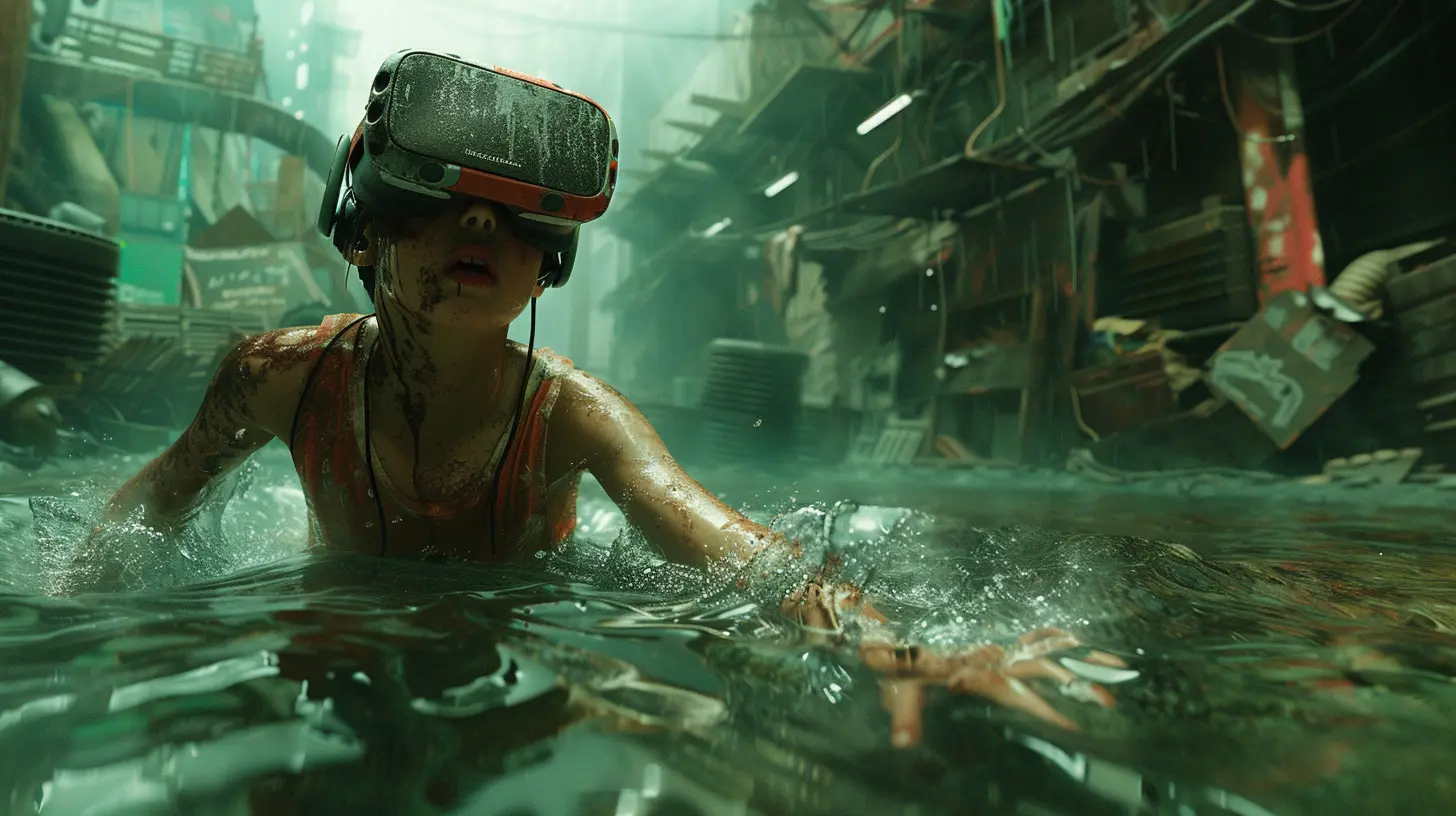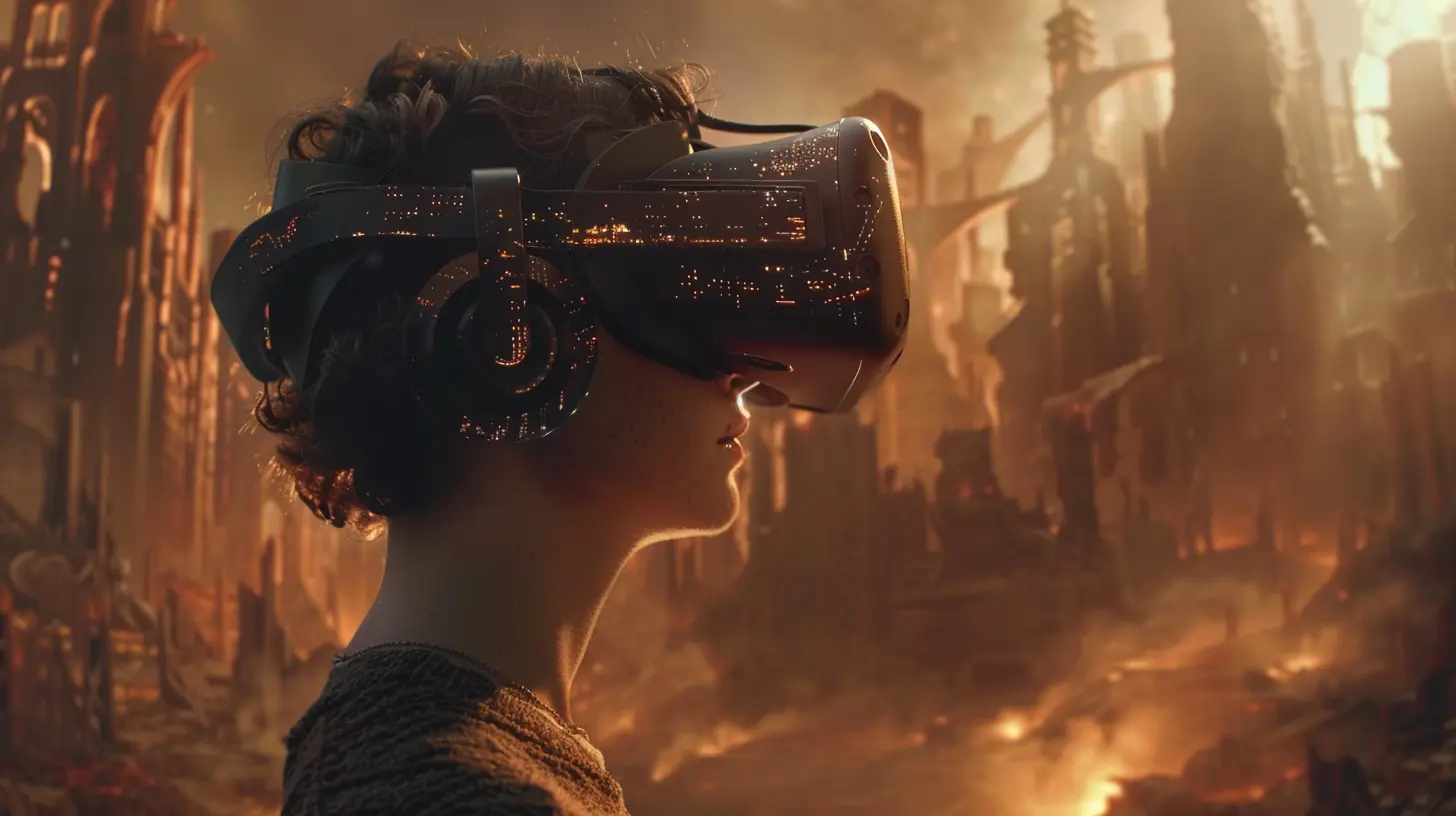Pushing Boundaries: Realism in VR Gaming Experiences
19 June 2025
Virtual Reality (VR) gaming isn’t just about flashy graphics or futuristic headsets anymore. It's about immersion. It's about tricking your brain into thinking you're somewhere else entirely. We're not just talking about dodging bullets or flying spaceships—we’re talking about feeling like you're actually there, squatting in the trenches or sneaking through haunted halls. That level of realism? It's what’s pushing VR to new, mind-blowing frontiers.
In this article, we’re diving deep into how developers and hardware creators are pushing the limits of realism in VR games. We’ll look at the tech, the psychology, and the magic sauce that makes VR feel more real than ever. So, strap on your headset (figuratively, for now) and let’s step inside the virtual universe.
The Core of Realism: What Really Makes a VR Game Feel ‘Real’?
Let’s break it down. Realism in VR isn’t just about lifelike visuals—though they definitely help. It's an entire cocktail of different factors blended together:- Visual fidelity – Clear, high-resolution textures and lifelike lighting.
- Physics and interactions – Everything moves the way you'd expect in the physical world.
- Spatial audio – You hear sounds from where they naturally should come.
- Haptic feedback – Feeling the game through real-time vibrations or pressure.
- Freedom of movement – Full use of your body, not just your thumbs.
- Presence – That hard-to-describe sensation that you're really in the world.
Think of VR as your senses being hijacked—in a good way. The more cues the game gives your brain to accept the virtual as real, the deeper you’re pulled in.
Graphics Are Good—but They’re Not Everything
Yes, graphics matter. Everyone loves a jaw-dropping landscape or a perfectly rendered enemy. But here’s the kicker: a game doesn’t need photorealism to feel real. Weird, right?What gives the game its realism is consistency. If the lighting behaves the way it should, if objects respond with realistic physics, and if environments react to your actions, your brain starts buying what the game’s selling.
Games like Half-Life: Alyx are masters at this. Even though it’s set in a dystopian, alien-infested world, everything in it behaves how you'd expect. You reach for a glass bottle, and it shatters just like it would in real life. That kind of detail? That’s what seals the deal.
The Role of Haptic Feedback and Body Tracking
Imagine holding a sword and feeling that sword’s weight shift as you swing. Or sensing the recoil of a gun pulse through your hand. That’s haptic feedback in action.Tech like the bHaptics TactSuit and Valve Index controllers go beyond the usual rumble. They add muscle memory and a physical layer to the experience. Combine that with full-body tracking setups like the HTC Vive with Vive Trackers, and suddenly you’re not just playing a character—you are the character.
Still not sure if this matters? Think of the last time a minor vibration on your phone startled you. Now amplify that by an entire suit responding to virtual punches, gun blasts, or rain. That’s immersion on steroids.
Spatial Audio: The Unsung Hero of VR Realism
Let’s get real—sound gets no love, but it’s a game-changer for immersion.VR titles that use 3D spatial audio can make you feel like someone’s whispering right behind you. You instinctively turn your head because, well, that’s what you’d do in real life.
Games like “The Walking Dead: Saints & Sinners” use this brilliantly. You hear a zombie groaning off to the side, and your body reacts with authentic panic. It’s not just about hearing what, it's about knowing where—and how far away—that’s where the magic lies.
Hand Tracking: Waving Goodbye to Controllers
One of the most exciting steps toward true realism is controller-free interaction.Meta Quest’s hand tracking technology lets you reach, grab, push, and interact using just your hands—no buttons, no joysticks. It’s like motion capture meets Minority Report.
It’s still not perfect, but it’s getting better with each firmware update. The closer we get to using our limbs exactly as we do in real life, the easier it is to forget we’re in a simulation.
And let’s be honest—it’s just cool waving your hand to open a virtual door instead of pressing a trigger.
Smell and Taste in VR? Oh, It’s Coming
Okay, you might roll your eyes, but sensory VR is actually a thing.Startups like OVR Technology are working on devices that release tiny puffs of scent in sync with the virtual world. Burning forest? Smell the smoke. Ocean breeze? Here comes the salty air.
Taste is a little further behind, but there are experimental prototypes involving electrical stimulation of taste buds. It sounds wild, but it could help simulate flavor without needing food.
We’re not saying you’ll soon be munching on virtual pizza, but the fact this is even possible shows how deep the rabbit hole goes.
AI-Powered NPCs: Making Virtual People Feel Alive
Nothing breaks immersion in a VR game like a dead-eyed NPC repeating the same phrase over and over. But enter AI.Games are starting to use AI-driven dialogue and behaviors, making characters more lifelike and unpredictable. Instead of static responses, NPCs can read your tone, body language, and respond dynamically.
Imagine interrogating a suspect in a VR detective game. They read your micro-expressions, shift nervously, and alter their story if you push too hard. Creepy? A little. Realistic? Definitely.
Environmental Interactions: A Living, Breathing World
Realistic VR isn’t just about reacting to things—it’s about the environment reacting to you.We’re talking footprints in snow, fog on your virtual visor, or wind that affects your aim. Games like “Boneworks” take physics seriously—every object has weight, momentum, and purpose. You can stack, throw, build, and break practically anything. Your actions matter, and that builds trust in the digital world.
When your brain sees consistent cause and effect, it stops questioning the illusion. That’s where the real VR magic kicks in.
The Psychological Side: Why Realism Matters So Much
Here’s where things get deep. The reason realism in VR works so well isn’t just tech—it’s psychology.Our brains are wired to interpret sensory input and create a mental model of our surroundings. When VR taps into those senses convincingly enough—sight, sound, touch—our brain fills in the rest. That’s how you forget you’re standing in your living room and start thinking you’re exploring a dungeon or piloting a mech.
Ever felt vertigo standing on the edge of a cliff in VR? That’s your brain not caring that your feet are actually on the carpet. It’s protecting you based on what it thinks is real. That’s presence.
Challenges in Chasing Hyper-Realism
Not everything is smooth sailing. As realism increases, so do the hurdles:- Motion sickness – The more real it feels, the worse the disconnect when your body disagrees.
- Hardware costs – High-end immersion often comes with high-end pricing.
- Processing power – Realistic worlds are CPU/GPU monsters.
- Uncanny valley – Too real can be creepy when not done perfectly.
- Accessibility – Not everyone can physically interact with VR the same way.
Still, the industry is tackling these issues head-on, and with the arrival of standalone headsets, powerful PCs, and even cloud-based rendering, the future’s looking promising.
The Road Ahead: What’s Next in VR Realism?
So, where do we go from here? Probably toward full sensory immersion.Think lightweight haptic suits, brain-computer interfaces (yep, Elon Musk’s Neuralink-type tech), super-detailed dynamic worlds, and AI companions that feel frighteningly human.
There’s also talk of shared virtual spaces that feel like actual places—a sort of next-gen metaverse where the laws of physics and emotion apply just as clearly as they do IRL.
In other words, we’re heading toward VR experiences where the only limit might be your imagination.
Final Thoughts
Realism in VR gaming isn’t just about making things look pretty. It’s about crafting experiences so authentic, so believable, that you forget you’re even playing a game. It's the small things—the movement of shadows, the creak of a door, the tingle of haptic feedback—that add up to recreate reality.As technology races forward, the line between the virtual and real world is becoming thinner every day. The more our senses are engaged, the more immersive the experience becomes. And let’s face it—who doesn’t want to be the hero in their own sci-fi epic or fantasy saga?
The future of VR isn’t just fun—it’s freakishly real. And we’re all here for it.
all images in this post were generated using AI tools
Category:
Realism In GamesAuthor:

Greyson McVeigh
Discussion
rate this article
1 comments
Romina Alvarez
Exploring realism in VR gaming opens new dimensions of immersion and emotional connection. However, we must balance technological advancements with accessibility and ethical considerations, ensuring that the experience enriches rather than overwhelms the player’s journey.
July 5, 2025 at 3:51 AM

Greyson McVeigh
Thank you for your thoughtful comment! I completely agree that while realism in VR can enhance immersion and emotional connections, we must prioritize accessibility and ethics to ensure a positive and enriching experience for all players.


